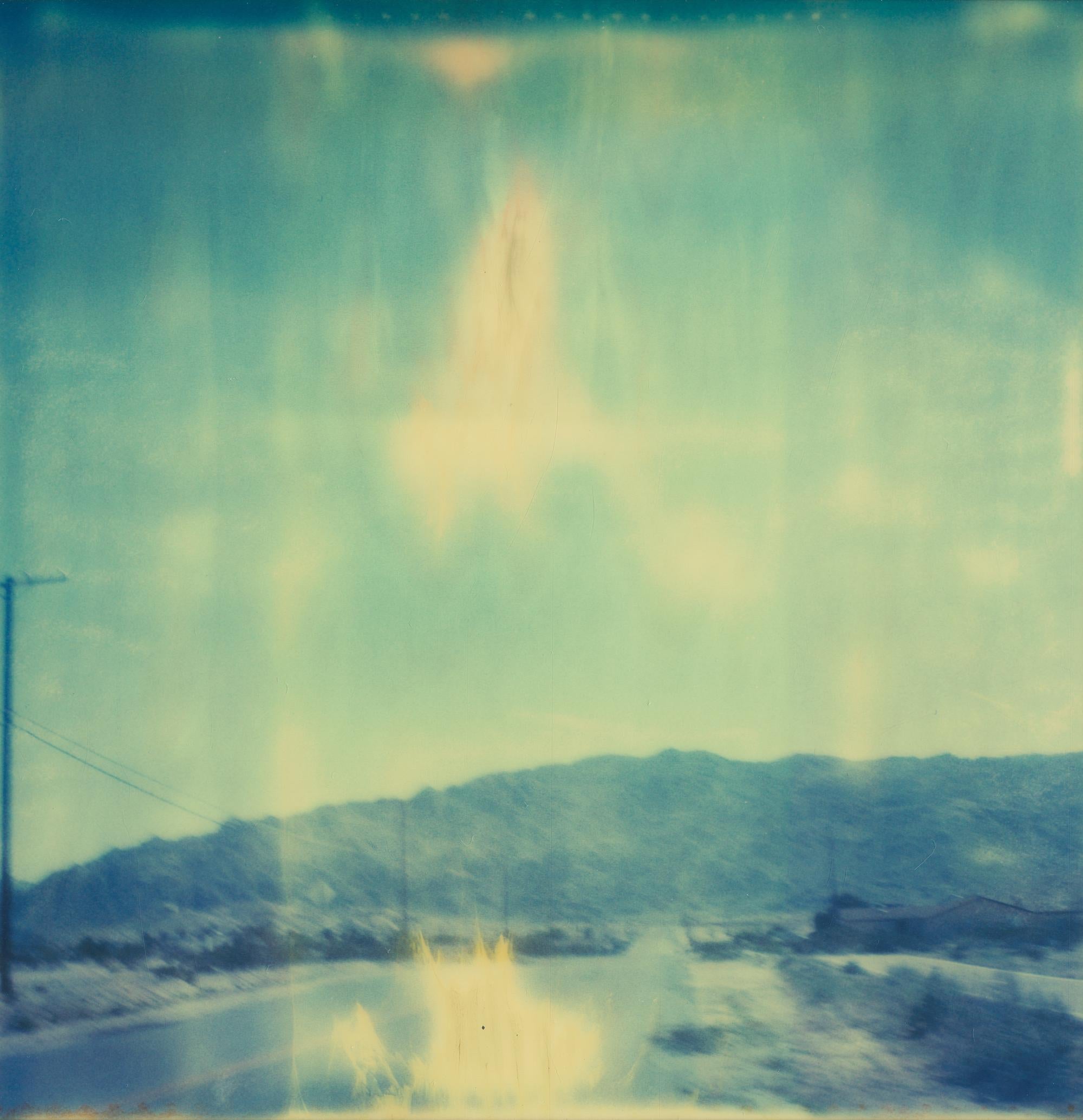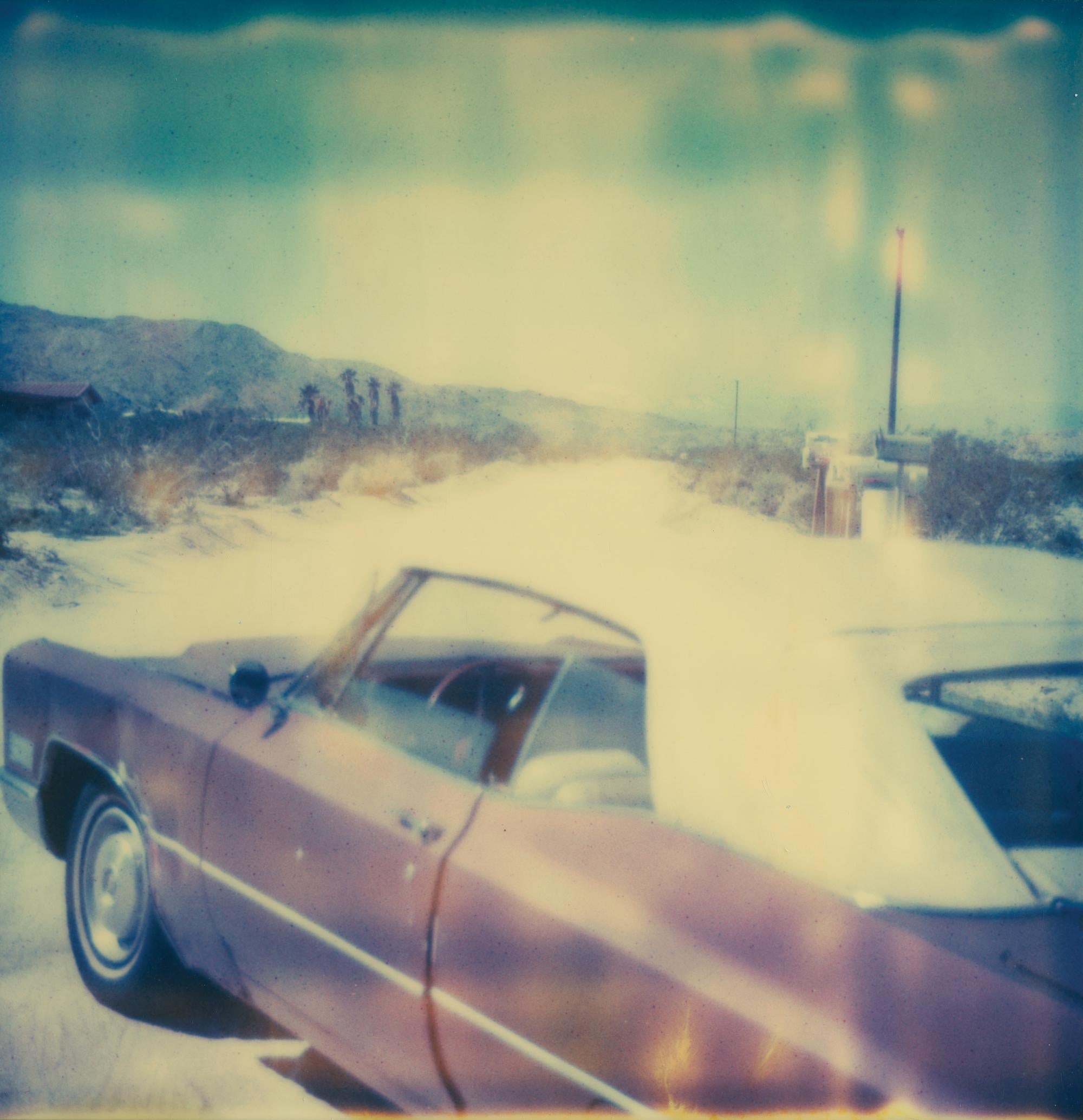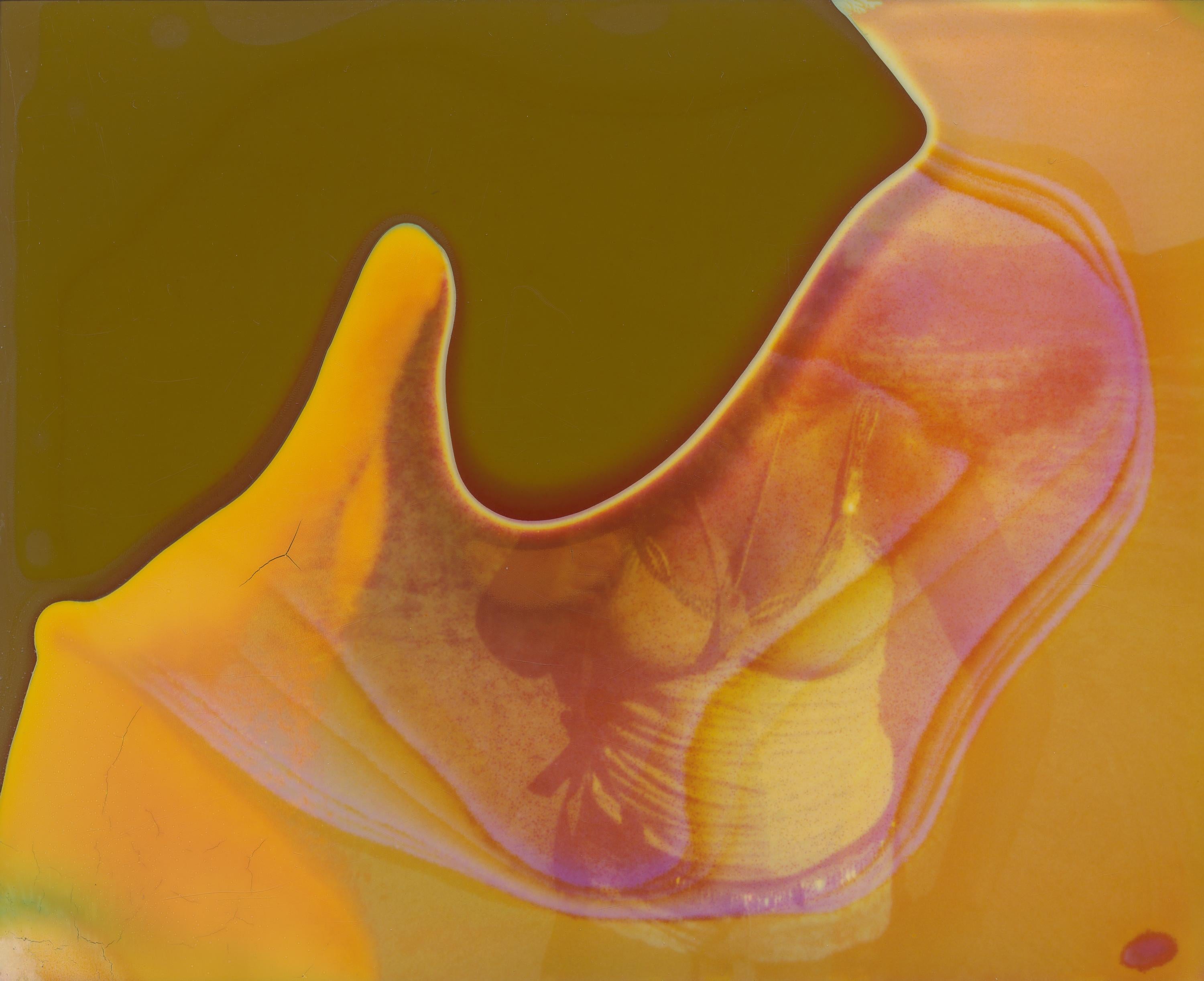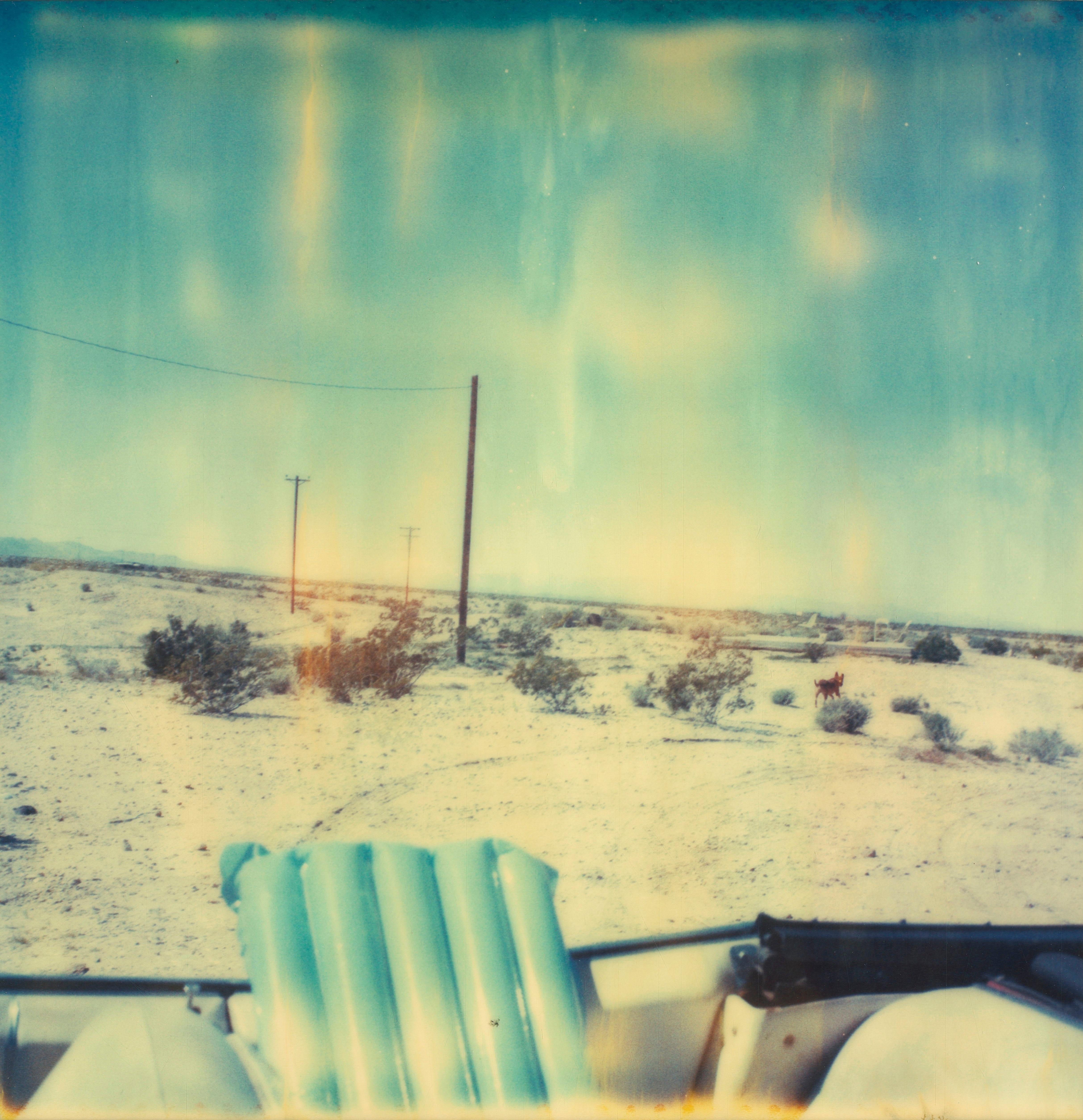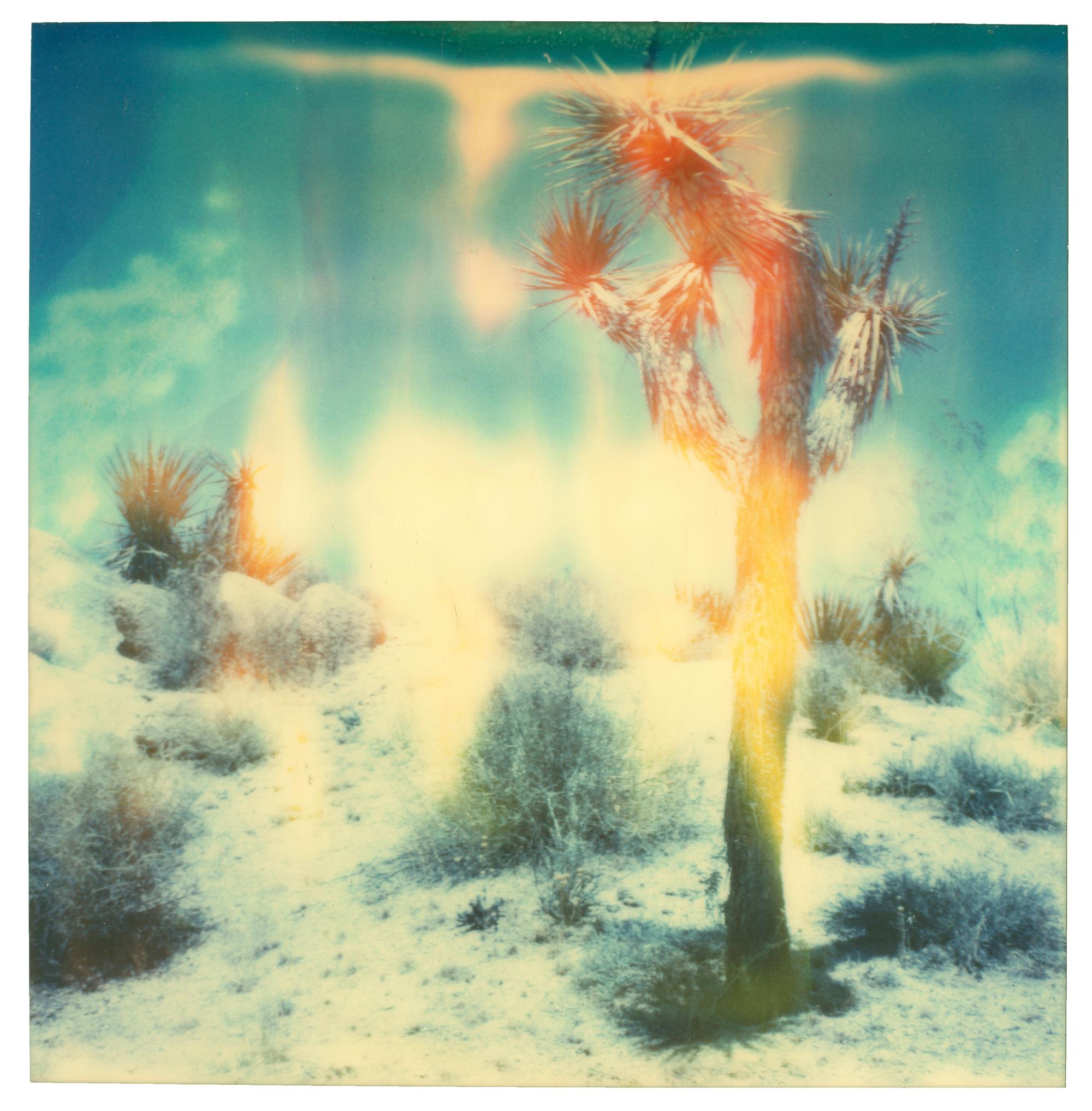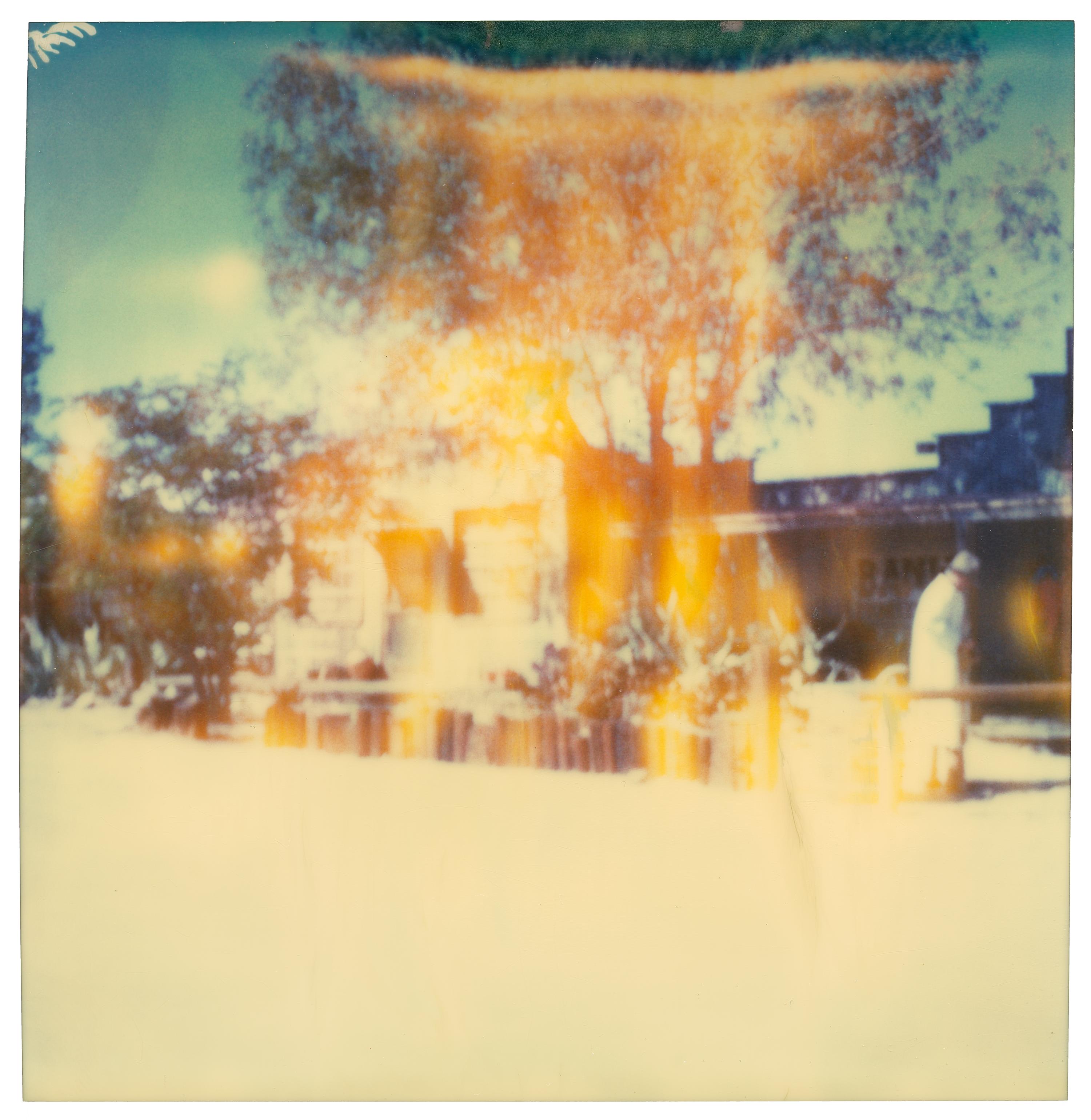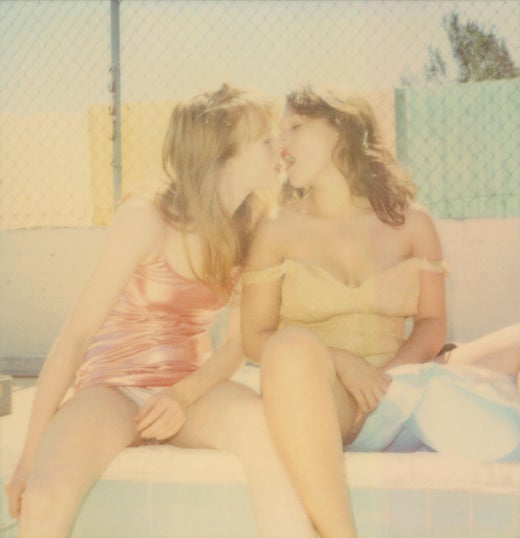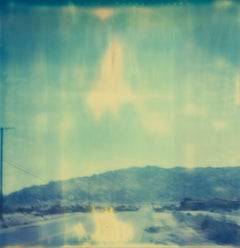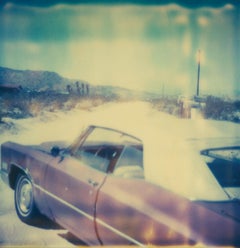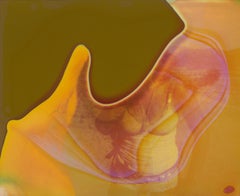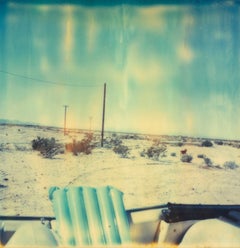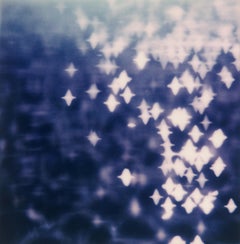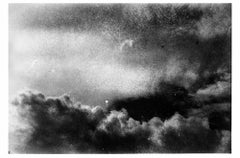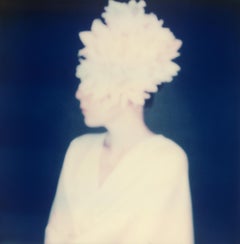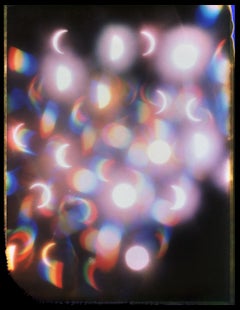Items Similar to Kaleidoscope (Till Death do us Part) - Contemporary, Polaroid
Want more images or videos?
Request additional images or videos from the seller
1 of 2
Stefanie SchneiderKaleidoscope (Till Death do us Part) - Contemporary, Polaroid2005
2005
$304
$38020% Off
£233.04
£291.3020% Off
€266.73
€333.4120% Off
CA$434.25
CA$542.8120% Off
A$476.24
A$595.3020% Off
CHF 246.74
CHF 308.4320% Off
MX$5,722.40
MX$7,15320% Off
NOK 3,106.02
NOK 3,882.5320% Off
SEK 2,915.09
SEK 3,643.8720% Off
DKK 1,992.73
DKK 2,490.9120% Off
About the Item
Kaleidoscope (Till Death do us Part) - 2005
20x20cm,
Edition of 10 plus 2 Artist Proofs.
Archival C-Print, based on the original Polaroid.
Certificate and Signature label.
Artist Inventory #18701.
Not mounted.
A Star is Born
written by Ioana Velaneau
Published in EXBERLINER
Fleeting Instants, Enduring Dreams
Stefanie Schneider’s work dissolves the boundaries between photography and cinema, reality and fiction. Using expired Polaroid film, she captures moments that feel both intimate and otherworldly—faded memories suspended in time. Her dreamlike images—tinged with chemical imperfection and narrative depth—echo the cinematic poetry of Los Angeles, the raw beauty of the California desert, and the aching quiet of emotional landscapes.
Originally from Cuxhaven, Germany, Schneider has long since rooted herself in Southern California, where the desert has become both her subject and sanctuary. Her creative base, once split between Berlin and L.A., is now fully anchored in SoCal, where she lives and works amid the very landscapes that populate her pictures. Through meticulously staged photographs and experimental film pieces, she explores themes of longing, freedom, fragility, and connection. Her series often unfold like film stills—fragments of a larger, unspoken story—where the mundane becomes mythical and the personal becomes universal.
For Schneider, the act of creation is a means of survival—a hypnotic antidote to the everyday. Her work invites viewers into a suspended reality, where memories, dreams, and desires blur under the desert sun.
"For me, art is the place where melancholy and magic meet. The camera lets me catch what would otherwise disappear—fragments of love, light, and longing."
— Stefanie Schneider
- Creator:Stefanie Schneider (1968, German)
- Creation Year:2005
- Dimensions:Height: 7.88 in (20 cm)Width: 7.88 in (20 cm)Depth: 0.04 in (1 mm)
- Medium:
- Movement & Style:
- Period:
- Condition:
- Gallery Location:Morongo Valley, CA
- Reference Number:1stDibs: LU652316276332
Stefanie Schneider
Stefanie Schneider received her MFA in Communication Design at the Folkwang Schule Essen, Germany. Her work has been shown at the Museum for Photography, Braunschweig, Museum für Kommunikation, Berlin, the Institut für Neue Medien, Frankfurt, the Nassauischer Kunstverein, Wiesbaden, Kunstverein Bielefeld, Museum für Moderne Kunst Passau, Les Rencontres d'Arles, Foto -Triennale Esslingen., Bombay Beach Biennale 2018, 2019.
About the Seller
4.9
Platinum Seller
Premium sellers with a 4.7+ rating and 24-hour response times
Established in 1996
1stDibs seller since 2017
1,047 sales on 1stDibs
Typical response time: 1 hour
- ShippingRetrieving quote...Shipping from: Morongo Valley, CA
- Return Policy
Authenticity Guarantee
In the unlikely event there’s an issue with an item’s authenticity, contact us within 1 year for a full refund. DetailsMoney-Back Guarantee
If your item is not as described, is damaged in transit, or does not arrive, contact us within 7 days for a full refund. Details24-Hour Cancellation
You have a 24-hour grace period in which to reconsider your purchase, with no questions asked.Vetted Professional Sellers
Our world-class sellers must adhere to strict standards for service and quality, maintaining the integrity of our listings.Price-Match Guarantee
If you find that a seller listed the same item for a lower price elsewhere, we’ll match it.Trusted Global Delivery
Our best-in-class carrier network provides specialized shipping options worldwide, including custom delivery.More From This Seller
View AllWonder Valley (Till Death Do Us Part) - Contemporary, Polaroid
By Stefanie Schneider
Located in Morongo Valley, CA
Wonder Valley (Till Death Do Us Part) - 2005
20x20cm,
Edition of 10, plus 2 Artist Proofs.
Archival C-Print, based on the original Polaroid.
Certificate and Signature label.
Art...
Category
Early 2000s Contemporary Color Photography
Materials
Archival Paper, Photographic Paper, C Print, Color, Polaroid
Conception (Till Death do us Part) - Contemporary, Polaroid
By Stefanie Schneider
Located in Morongo Valley, CA
Conception (Till Death do us Part) - 2005
40x40cm,
Edition of 10 plus 2 Artist Proofs.
Archival C-Print, based on the original Polaroid.
Certificate and Signature label.
Artist Inventory #9157.
Not mounted.
Stefanie Schneider's photographs evoke scintillating moments suspended between daydreams and waking reality. Each scene, captured in the southwestern United States, radiates a surreal enchantment. The artist's role appears minimal yet pivotal, providing the decisive impulse that sets the imagery into motion. The figures in her photographs remain as elusive as the motivations behind their actions, and the narratives woven through her sequences are tantalizingly open to interpretation.
Atmospheric disturbances in Schneider's work emerge as the result of a deliberate narrative arrangement, compelling viewers to navigate between visual mementos and the gaps in memory they conjure. Yet, her artistry is no less purposeful in its engagement with medium. Despite the inherent unpredictability of expired Polaroid film, Schneider wields it with calculated intent. The photo-chemical self-developing process, altered by age and decay, transforms the initial exposure into something alien yet mesmerizing. This dysfunction is a cornerstone of MIND SCREEN, a multi-part work that explores the fragility of reality, authenticity, and comprehension.
Schneider juxtaposes this brittleness with a magical realism steeped in chimeras, crafting dreamlike sequences that resist definitive narratives. She entrusts viewers with the responsibility of piecing together presumed storylines, refusing to offer a manual for interpretation. Instead, her work draws us into a realm where the unreal reigns—shimmering scenes that evoke the mirage of a road movie, a moment of violence, or a tragic self-sacrifice.
Film genres are invoked and subverted in a single breath: Paris, Texas by Wim Wenders is reimagined through a rose-tinted lens, Thelma...
Category
Early 2000s Contemporary Landscape Photography
Materials
Archival Paper, Photographic Paper, C Print, Color, Polaroid
$480 Sale Price
20% Off
Living in a Dream (Till Death do us Part) - Contemporary, Polaroid, Women
By Stefanie Schneider
Located in Morongo Valley, CA
Living in a Dream (Till Death do us Part) - 2005
20x20cm,
Edition of 10,
Archival C-Print print, based on the Polaroid.
Certificate and Signature label, artist Inventory No. 9781.
Not mounted.
on offer is a piece from the movie "Till Death do us Part"
Stefanie Schneider’s Till Death Do Us Part
or “There is Only the Desert for You.”
BY DREW HAMMOND
Stefanie Schneider’s Til Death to Us Part is a love narrative that comprises three elements:
1.
A montage of still images shot and elaborated by means of her signature technique of using Polaroid formats with outdated and degraded film stock in natural light, with the resulting im ages rephotographed (by other means) enlarged and printed in such a way as to generate further distortions of the image.
2.
Dated Super 8 film footage without a sound track and developed by the artist.
3.
Recorded off-screen narration of texts written by the actors or photographic subjects, and selected by the artist.
At the outset, this method presupposes a tension between still and moving image; between the conventions about the juxtaposition of such images in a moving image presentation; and, and a further tension between the work’s juxtaposition of sound and image, and the conventional relationship between sound and image that occurs in the majority of films. But Till Death Do Us Part also conduces to an implied synthesis of still and moving image by the manner in which the artist edits or cuts the work.
First, she imposes a rigorous criterion of selection, whether to render a section as a still or moving image. The predominance of still images is neither an arbitrary residue of her background as a still photographer—in fact she has years of background in film projects; nor is it a capricious reaction against moving picture convention that demands more moving images than stills. Instead, the number of still images has a direct thematic relation to the fabric of the love story in the following sense. Stills, by definition, have a very different relationship to time than do moving images. The unedited moving shot occurs in real time, and the edited moving shot, despite its artificial rendering of time, all too 2009often affords the viewer an even greater illusion of experiencing reality as it unfolds. It is self-evident that moving images overtly mimic the temporal dynamic of reality.
Frozen in time—at least overtly—still photographic images pose a radical tension with real time. This tension is all the more heightened by their “real” content, by the recording aspect of their constitution. But precisely because they seem to suspend time, they more naturally evoke a sense of the past and of its inherent nostalgia. In this way, they are often more readily evocative of other states of experience of the real, if we properly include in the real our own experience of the past through memory, and its inherent emotions.
This attribute of stills is the real criterion of their selection in Til Death Do Us Part where consistently, the artist associates them with desire, dream, memory, passion, and the ensemble of mental states that accompany a love relationship in its nascent, mature, and declining aspects.
A SYNTHESIS OF MOVING AND STILL IMAGES BOTH FORMAL AND CONCEPTUAL
It is noteworthy that, after a transition from a still image to a moving image, as soon as the viewer expects the movement to continue, there is a “logical” cut that we expect to result in another moving image, not only because of its mise en scène, but also because of its implicit respect of traditional rules of film editing, its planarity, its sight line, its treatment of 3D space—all these lead us to expect that the successive shot, as it is revealed, is bound to be another moving image. But contrary to our expectation, and in delayed reaction, we are startled to find that it is another still image.
One effect of this technique is to reinforce the tension between still and moving image by means of surprise. But in another sense, the technique reminds us that, in film, the moving image is also a succession of stills that only generate an illusion of movement. Although it is a fact that here the artist employs Super 8 footage, in principle, even were the moving images shot with video, the fact would remain since video images are all reducible to a series of discrete still images no matter how “seamless” the transitions between them.
Yet a third effect of the technique has to do with its temporal implication. Often art aspires to conflate or otherwise distort time. Here, instead, the juxtaposition poses a tension between two times: the “real time” of the moving image that is by definition associated with reality in its temporal aspect; and the “frozen time” of the still image associated with an altered sense of time in memory and fantasy of the object of desire—not to mention the unreal time of the sense of the monopolization of the gaze conventionally attributed to the photographic medium, but which here is associated as much with the yearning narrator as it is with the viewer.
In this way, the work establishes and juxtaposes two times for two levels of consciousness, both for the narrator of the story and, implicitly, for the viewer:
A) the immediate experience of reality, and
B) the background of reflective effects of reality, such as dream, memory, fantasy, and their inherent compounding of past and present emotions.
In addition, the piece advances in the direction of a Gesammtkunstwerk, but in a way that reconsiders this synaesthesia as a unified complex of genres—not only because it uses new media that did not exist when the idea was first enunciated in Wagner’s time, but also because it comprises elements that are not entirely of one artist’s making, but which are subsumed by the work overall. The totality remains the vision of one artist.
In this sense, Till Death Do Us Part reveals a further tension between the central intelligence of the artist and the products of other individual participants. This tension is compounded to the degree that the characters’ attributes and narrated statements are part fiction and part reality, part themselves, and part their characters. But Stefanie Schneider is the one who assembles, organizes, and selects them all.
THE RELATIONSHIP BETWEEN THIS IDEA (above) AND PHOTOGRAPHY
This selective aspect of the work is an expansion of idea of the act of photography in which the artistic photographer selects that which is already there, and then, by distortion, definition or delimitation, compositional and lighting emphasis, and by a host of other techniques, subsumes that which is already there to transform it into an image of the artist’s contrivance, one that is no less of the artist’s making than a work in any other medium, but which is distinct from many traditional media (such as painting) in that it retains an evocation of the tension between what is already there and what is of the artist’s making. Should it fail to achieve this, it remains, to that degree, mere illustration to which aesthetic technique has been applied with greater or lesser skill.
The way Til Death Do Us Part expands this basic principle of the photographic act, is to apply it to further existing elements, and, similarly, to transform them. These additional existing elements include written or improvised pieces narrated by their authors in a way that shifts between their own identities and the identities of fictional characters. Such characters derive partially from their own identities by making use of real or imagined memories, dreams, fears of the future, genuine impressions, and emotional responses to unexpected or even banal events. There is also music, with voice and instrumental accompaniment. The music slips between integration with the narrative voices and disjunction, between consistency and tension. At times it would direct the mood, and at other times it would disrupt.
Despite that much of this material is made by others, it becomes, like the reality that is the raw material of an art photo, subsumed and transformed by the overall aesthetic act of the manner of its selection, distortion, organization, duration, and emotional effect.
* * *
David Lean was fond of saying that a love story is most effective in a squalid visual environment. In Til Death Do Us Part, the squalor of the American desert...
Category
Early 2000s Contemporary Color Photography
Materials
Archival Paper, Photographic Paper, C Print, Color, Polaroid
Wonder Valley (Till Death Do Us Part) - Contemporary, Polaroid
By Stefanie Schneider
Located in Morongo Valley, CA
Wonder Valley (Till Death Do Us Part) - 2005
20x20cm,
Edition of 10, plus 2 Artist Proofs.
Archival C-Print, based on the original Polaroid.
Certificate and Signature label.
Art...
Category
Early 2000s Contemporary Color Photography
Materials
Archival Paper, Photographic Paper, C Print, Color, Polaroid
Buried - Contemporary, Landscape, Figurative, expired, Polaroid, analog
By Stefanie Schneider
Located in Morongo Valley, CA
Buried (Stranger than Paradise) - 1999
Edition of 10,
58x56cm,
Analog C-Print, hand-printed by the artist on Fuji Crystal Archive Paper,
based on a Polaroid. Artist inventory Numb...
Category
1990s Contemporary Color Photography
Materials
Archival Paper, Photographic Paper, C Print, Color, Polaroid
High Noon (The Getaway) - The Last Picture Show - Polaroid, Contemporary
By Stefanie Schneider
Located in Morongo Valley, CA
High Noon - The Getaway (The Last Picture Show) - 1999
50x50cm,
Edition of 10, plus 2 Artist Proofs.
Archival C-Print, based on the Polaroid.
Artist Inventory #21980.
Signature ...
Category
1990s Contemporary Color Photography
Materials
Archival Paper, Photographic Paper, C Print, Color, Polaroid
You May Also Like
Blue Moon - Large Scale Color Polaroid Photographic Print Framed
By Pia Clodi
Located in Zürich, CH
Blue Moon - Still Life Photographic Print Framed
120x120cm
Austrian Contemporary Photographer Pia Clodi, demonstrates immense skill through her analog photography, which is often p...
Category
21st Century and Contemporary Contemporary Abstract Photography
Materials
Photographic Film, Photographic Paper, Polaroid
$1,802 Sale Price
20% Off
Expired_14_2020 - Photograph by Serena Zeppilli
Located in Roma, IT
This photograph Expired_14_2020 was taken by the Italian photographer Serena Zeppilli.
It is part of the series "I was looking for something that I...
Category
21st Century and Contemporary Contemporary Figurative Photography
Materials
Photographic Paper
A Bloomy View - Large Scale Art Polaroid Photographic Print Framed
By Pia Clodi
Located in Zürich, CH
A bloomy view - Polaroid Photographic Print Framed by Pia Clodi
The blue tones within her work should not be interpreted as coldness, as her works are full of fleeting moments withi...
Category
21st Century and Contemporary Contemporary Abstract Photography
Materials
Photographic Film, Photographic Paper, Color, Polaroid
$1,802 Sale Price
20% Off
night sky #7 (bleached polaroid 4x5 negative)
Located in New York, NY
Pia Paulina Guilmoth
night sky #7 (bleached polaroid 4×5 negative)
2025
Accompanied by a certificate of authenticity signed by the artist
Archival pigment print (Edition of 3 + 2 ...
Category
2010s Contemporary Photography
Materials
Archival Pigment
Price Upon Request
Jasmine - 21st Century Contemporary Photographic Print Color Polaroid
By Pia Clodi
Located in Zürich, CH
Part of the BLOOMY VIEW series taken in Bern 2020 in collaboration with Heym Collections, the images gained new life in their ambiguity, which often stimulates the viewer to project ...
Category
2010s Contemporary Abstract Prints
Materials
Carbon Pigment, Polaroid
$1,802 Sale Price
20% Off
Vintage 20X24 Format Polaroid Signed Surrealist Photograph Eve Sonneman Photo
By Eve Sonneman
Located in Surfside, FL
This is from a show at Sidney Janis Gallery and is from the estate of Joan Sonnabend.
Eve Sonneman (born in Chicago on 1946) is an American photographer and artist. She did a series ...
Category
1990s Contemporary Color Photography
Materials
Color, Polaroid
